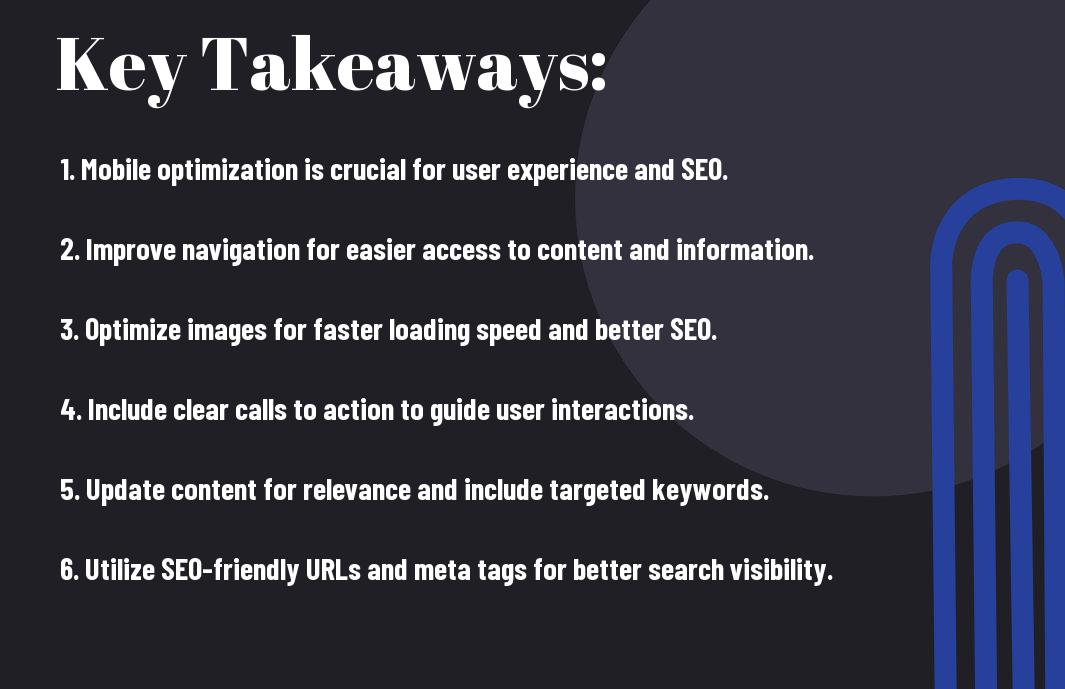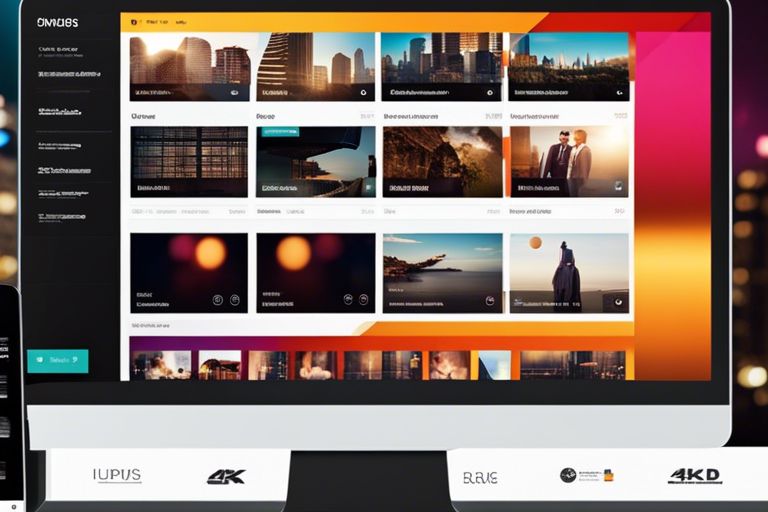Redesigning Your Website – Top Strategies For A Fresh And SEO-Friendly Look

How To Design A WordPress Website Like A Pro – Expert Tips And Tricks
March 6, 2024
7 Essential Steps For A Mobile-Responsive E-commerce Website Development
March 8, 2024Many businesses often overlook the importance of keeping their website updated and optimized for search engines. In today’s digital age, having a fresh and SEO-friendly website is crucial for attracting and retaining customers. This blog post will highlight some of the top strategies you can implement to give your website a modern look while also improving its visibility on search engine results pages. By incorporating these key strategies, you can ensure that your website not only looks great but also performs well in terms of SEO – driving more traffic and ultimately, more business.
Key Takeaways:
- Focus on User Experience: Prioritize user experience by creating a well-organized layout, easy navigation, and clear call-to-action buttons to improve overall website performance.
- Optimize for SEO: Implement SEO best practices such as utilizing relevant keywords, optimizing meta tags, and improving site speed to boost search engine visibility and attract more organic traffic.
- Mobile-Responsiveness is Key: Ensure that your redesigned website is mobile-responsive to provide a seamless experience across all devices and to cater to the increasing number of users accessing websites on mobile devices.


Planning Your Website Redesign
Setting Clear Redesign Goals
Planning your website redesign begins with setting clear goals for what you want to achieve with the new design. Some key considerations include improving user experience, increasing website traffic, enhancing brand identity, and generating more leads or sales. Clearly defining your objectives will help guide the redesign process and ensure that the final outcome aligns with your business goals.
Conducting a Website Audit
Any successful website redesign project starts with conducting a comprehensive website audit. This involves evaluating your current website’s performance, identifying areas for improvement, assessing your SEO strategy, and analyzing user engagement metrics. A website audit will help you uncover critical issues, outdated content, broken links, and SEO deficiencies that need to be addressed in the redesign process.
Website audits also provide insights into user behavior, competitor performance, and industry trends, helping you make informed decisions on how to optimize your website for better visibility and user experience. By conducting a thorough audit, you can create a solid foundation for a successful website redesign that not only looks fresh but also performs well in search engine rankings.

Designing for User Experience
Now Website redesign SEO checklist: Retaining and improving …
Implementing Responsive Design
An imperative aspect of designing for user experience is implementing responsive design. This approach ensures that your website adapts seamlessly to different screen sizes and devices, providing a consistent and user-friendly experience for all visitors. Responsive design is crucial for improving usability and ensuring that your site ranks well in search engine results pages.
Optimizing Site Navigation and Layout
Experience. This involves organizing your site’s navigation and layout in a clear and intuitive manner. Optimizing site navigation and layout contributes to a positive user experience by making it easy for visitors to find the information they need quickly. It also helps search engines crawl and index your site more effectively, enhancing its overall SEO performance.
SEO Strategies for Website Redesign
Keyword Research and Content Optimization
For a successful website redesign, thorough research into relevant keywords and optimization of content is crucial. Identify high-traffic keywords related to your business niche and integrate them strategically into your website’s pages. Ensure that the content is informative, engaging, and closely related to the keywords to enhance visibility and ranking on search engines.
Technical SEO Considerations
The technical aspects of SEO are equally important during a website redesign. Pay attention to factors like website speed, mobile-friendliness, and proper URL structures. Implementing a sitemap, optimizing meta tags, headers, and image alt text, and resolving any broken links are necessary for search engine crawlers to index and rank your website effectively.
Keyword research and content optimization are pivotal for driving organic traffic to your website. By identifying and targeting the right keywords strategically, you enhance your chances of ranking higher on search engine results pages. Furthermore, optimizing your content with these keywords increases the relevance and authority of your website, helping to attract and engage your target audience.

Launching and Monitoring the New Website
Pre-Launch Checklist
Many aspects need to be considered before launching a new website. Ensure all content is proofread and optimized for SEO, check for broken links, test website speed, and ensure mobile responsiveness. Setting up proper redirects from old URLs to new ones, and creating a sitemap for search engines are also crucial steps to take before going live. By having a comprehensive pre-launch checklist, you can minimize the chances of encountering issues post-launch.
Post-Launch Evaluation and Monitoring
Any successful website redesign project doesn’t stop at launch. Evaluation and monitoring post-launch are equally important to ensure the website’s performance meets the set goals. Monitoring web analytics to track traffic, user behavior, and conversions is imperative. Regularly checking for any technical issues, optimizing for performance, and making necessary improvements based on user feedback are all part of the post-launch evaluation process.
Evaluation should also include an analysis of key performance indicators (KPIs) such as bounce rate, time on site, and conversion rates. Identifying trends, patterns, and areas for improvement is crucial to continuously enhance the website’s performance and user experience.
To wrap up
So, when it comes to redesigning your website for a fresh and SEO-friendly look, incorporating these top strategies can greatly benefit your online presence. By focusing on mobile responsiveness, user experience, loading speed, quality content, and search engine optimization, you can ensure that your website not only looks great but also performs well in terms of attracting and retaining visitors. Remember that a website is often the first impression potential customers have of your business, so investing time and effort into a redesign with these key elements in mind can lead to increased traffic, higher rankings, and ultimately, more success for your brand.
FAQ
Q: Why should I consider redesigning my website?
A: Redesigning your website can help improve user experience, update your design to current standards, and enhance SEO performance.
Q: What are some key strategies for redesigning a website for a fresh look?
A: Some key strategies include updating your website’s design layout, refreshing content with relevant information, optimizing for mobile responsiveness, and improving site speed.
Q: How can I ensure that my redesigned website is SEO-friendly?
A: To ensure your redesigned website is SEO-friendly, focus on optimizing meta tags, improving site structure for better navigation, using relevant keywords, and implementing a responsive design.
Q: What are the benefits of having a visually appealing website design?
A: A visually appealing website design can help attract and retain visitors, convey professionalism and credibility, and enhance brand identity and recognition.
Q: How often should I consider redesigning my website?
A: It is recommended to redesign your website every 2-3 years to keep up with design trends, technology advancements, and changing user preferences.


